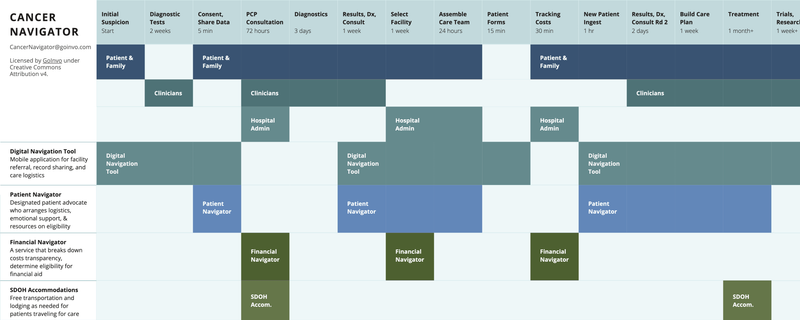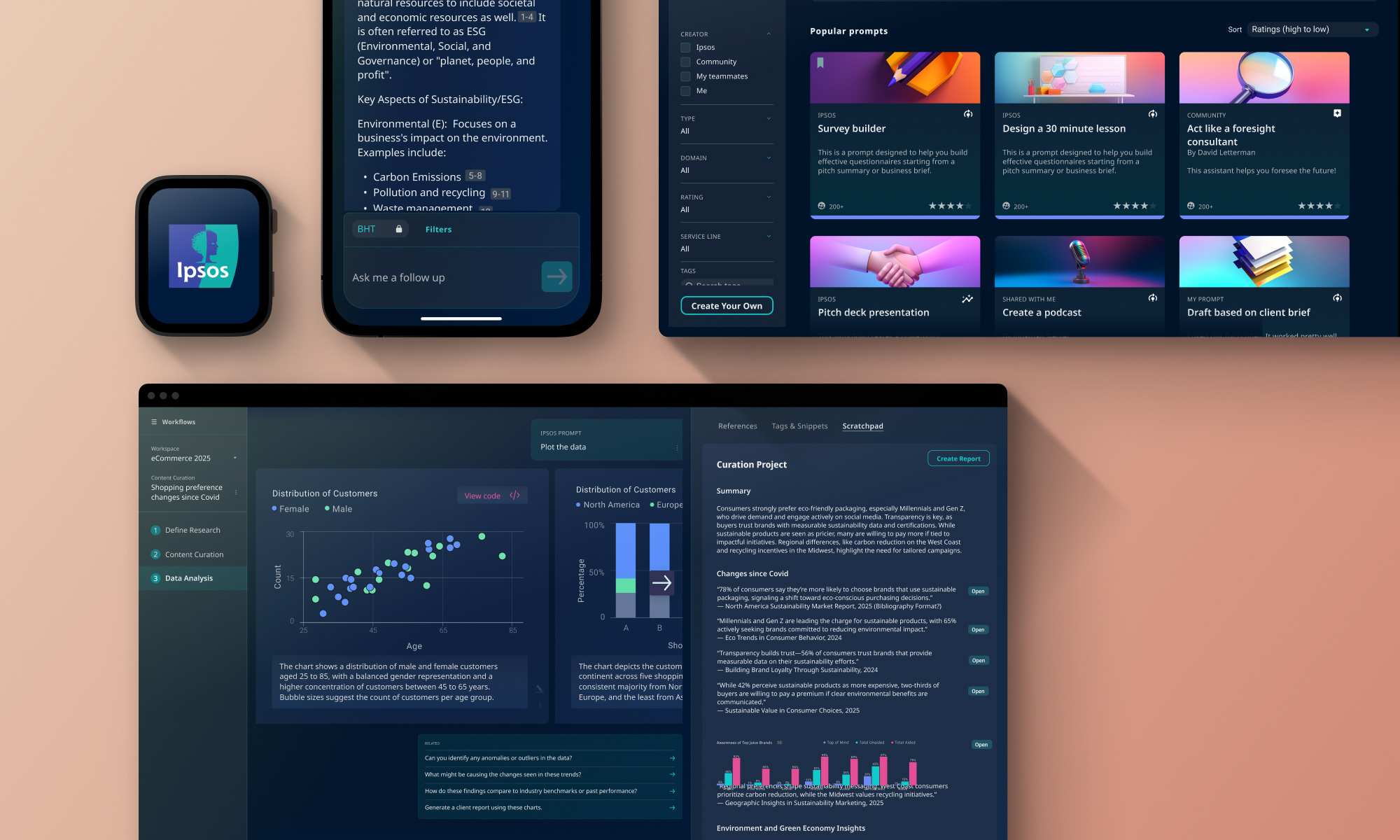
The Future of Research Intelligence
for IPSOS
Problem
Facto's early version missed researchers' needs which caused low adoption and lack of satisfaction with generative AI's results.
Solution
With Facto, researchers can now turn 40+ years of market data into cited insights in hours instead of weeks.
Results
- 90%+ adoption across Ipsos
- 75% of employees across 86 countries now certified in Generative AI through our in-house training program.
- 700,000+ prompts per month, and 10M+ API calls – fueling real research, not just novelty experiments.
Time: 1.5 designers for 6 months
Tags: Enterprise, AI

Report wizard to convert insights into a client-ready deliverable
GoInvo led the design of Ipsos Facto, an AI-native platform that wraps generative intelligence around market researchers' workflows. We aimed to mature the product's design thinking, uncomplicate AI for users, and develop features that fit industry-specific needs by layering in guided workflows, embedded prompts, and transparent AI logic.
Facto can now quickly analyze 40+ years of proprietary market intelligence across various source types to synthesize insights based on a single business question. This delivers client-ready results with detailed citation notes in hours instead of weeks, exponentially increasing the efficiency and quality of desk research.
What We Walked Into
Ipsos Facto had just launched a basic chatbot for enterprise use, powered by the promise of generative AI. However, the platform lacked detailed design to support the nuanced, analytical work of researchers.
- No mental model to transition from insight to action.
- Siloed elements like chat, files, and tools caused frequent switching and work disruption.
- Generic experience not optimized for research.
- Lack of UX strategy and planning in roadmap discussions.
These misalignments led to low adoption and high user burden. Researchers were expected to prompt their way to insight with no scaffolding, a complicated mental model, and poor UX.
What We Did
GoInvo collaborated with the Ipsos team to rethink Facto's user experience and make the AI useful. Under the guidance and leadership of David Zotter and JC Escalante, whose clear product vision and strategic direction were instrumental, we collectively rebuilt the foundation of the research agentic experience. Their expertise helped us align the design development with the needs of researchers and the broader enterprise. Together, we introduced guided workflows and research-specific tools for core tasks like content curation, meta-analysis, and transcript coding.
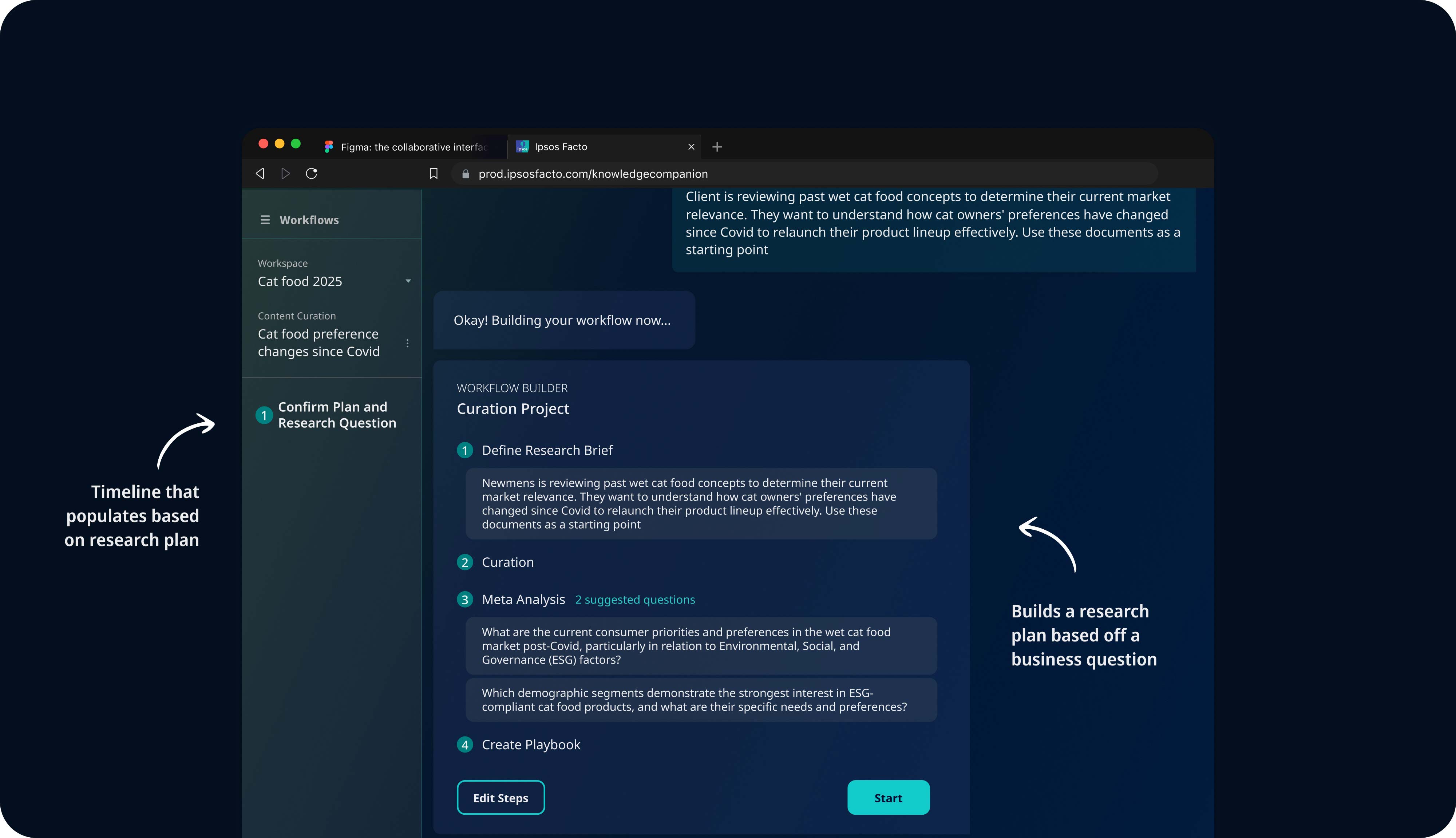
Template for guidance and automation around meta-analysis
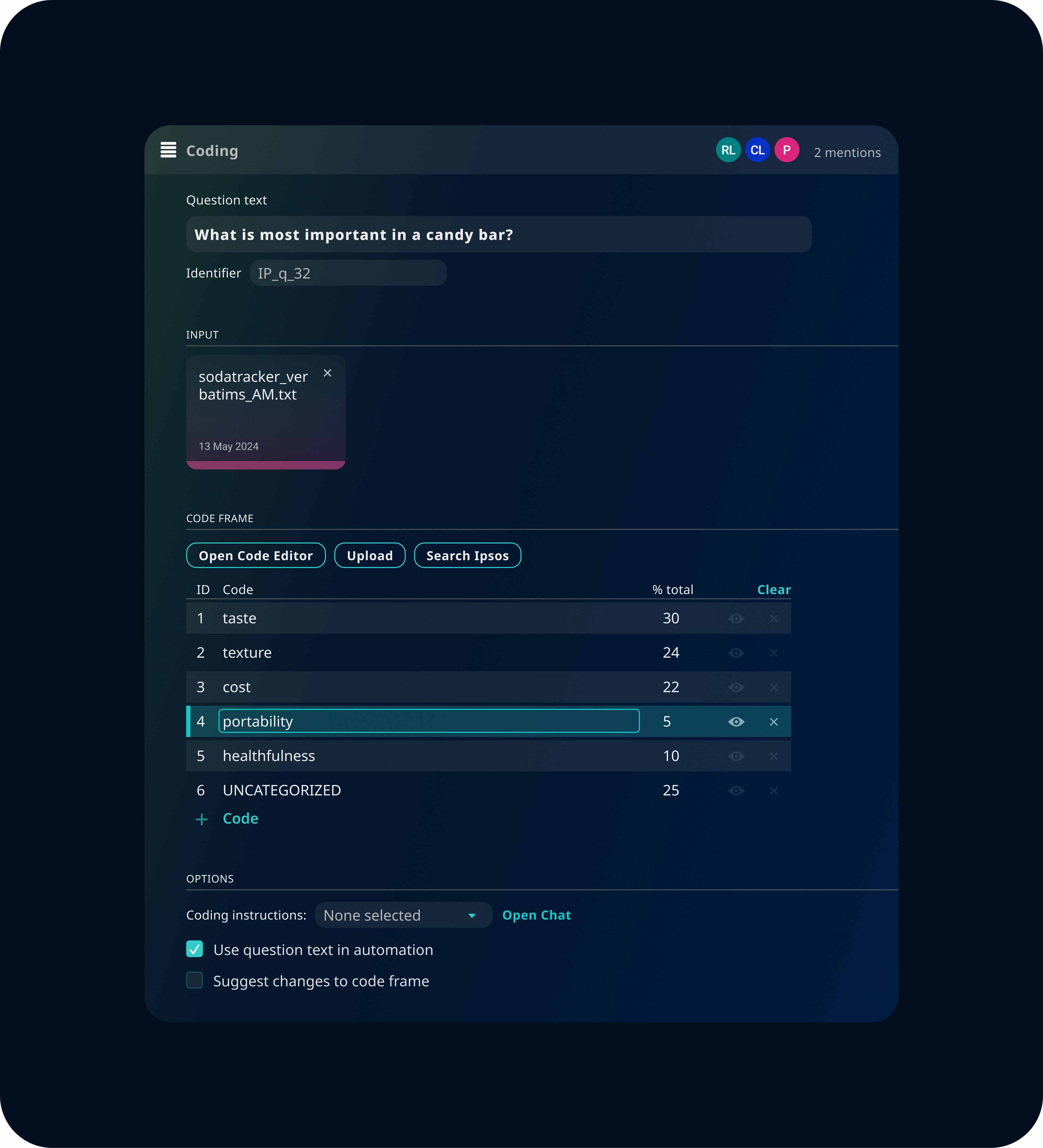

Coding and translation tools.
We reduced cognitive load by adding suggestions, limitations, and disclaimers into the UI. We added transparency to how AI decisions are made (and where they fail).

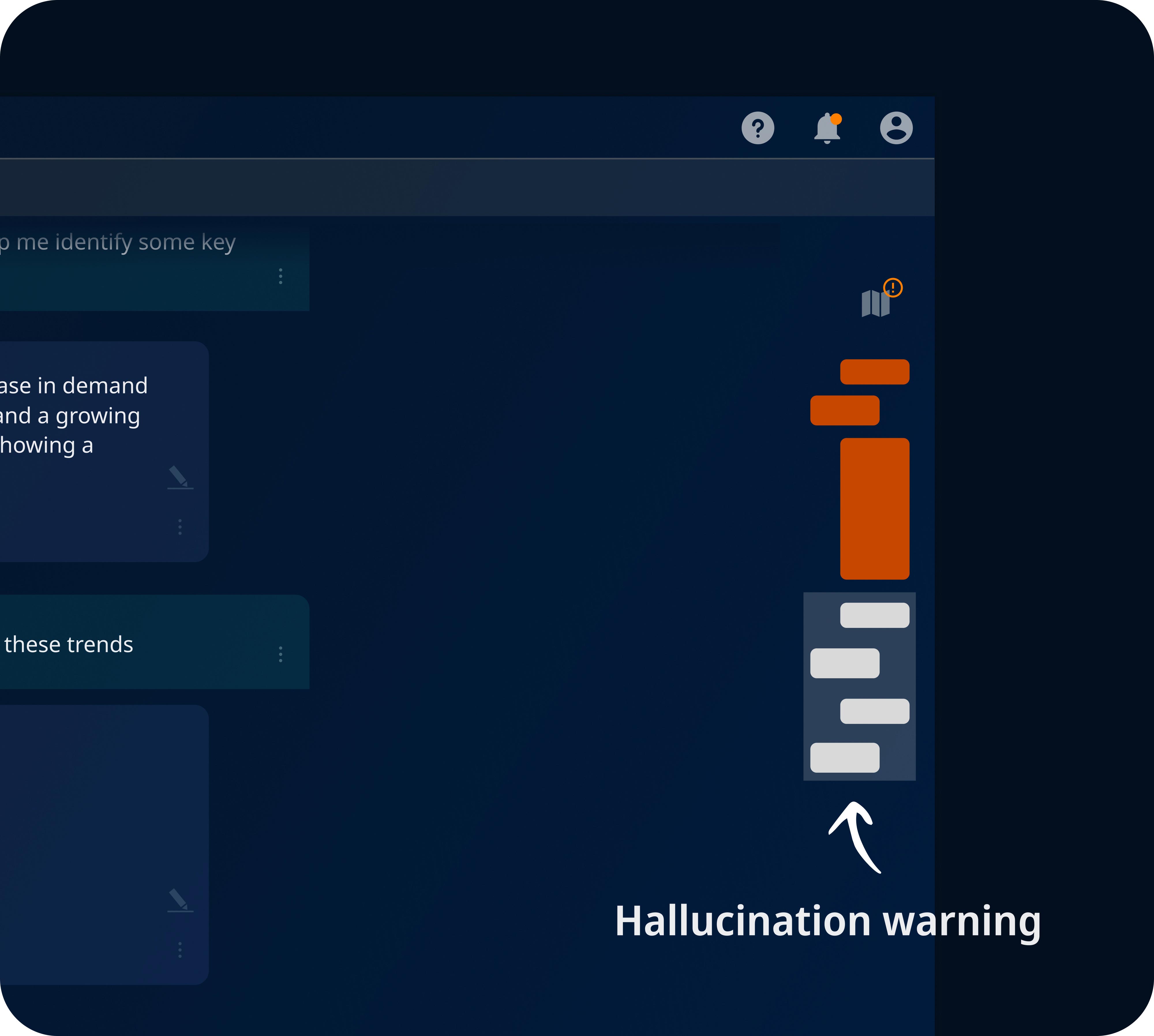

Design details that reduce user burden.
Additionally, we made the chat feel like part of a system, not a disconnected sidekick.
Quickly pull in a template or tool into an existing chat.
Insights that, on click, uncover details and citation metadata from diverse source types.
All of this was underpinned by five principles:
- Guide users through structured paths, not just blank screens
- Allow customization for different research types and teams
- Ensure transparency of how AI arrives at answers
- Use visual cues to reduce complexity and orient the user
- Protect privacy with clear permissions and data handling
What Changed
In three months:
- We moved from vendor to core contributor. Our team joined internal roadmap meetings and delivered concepts that were validated with users.
- We shipped dozens of UX band-aids that reduced daily papercuts (aka friction).
- We created a clickable prototype to guide what's next.
- We helped transition Facto from an internal experiment to a client-ready product, increasing the company's revenue potential.
By grounding Facto's AI tools in clear UX design, we helped increase user adoption and satisfaction by lowering the learning curve. Facto's unique distinction from off-the-shelf LLM products sets the product up for long-term market success.
Ipsos Facto Highlights:
- 90%+ adoption across Ipsos
- 75% of employees across 86 countries now certified in Generative AI through our in-house training program.
- 700,000+ prompts per month, and 10M+ API calls – fueling real research, not just novelty experiments.
- Client-facing AI agents launched—with more in development, co-created with partners who want in
- Collaboration with Stanford, MIT, the University of Chicago, and Temple University to keep us at the forefront of research innovation
Why This Matters
A good model wrapped in a bad experience is still a bad product. By deeply integrating UX into the research assistant, we designed generative AI to feel like a trustworthy white glove service. Transforming it from usable to useful. That's the difference delightful design can make.
We're only 25% of the way to a mature enterprise tool. Design isn't finished — it's evolving. Continued work with researchers, leadership, and frontline users is required to sharpen utility and flow.
Beyond the product, the organization itself is maturing in how it sees and uses design. We haven't yet hit the tipping point — where design is not just appreciated but funded, expected, and baked into enterprise services. A cultural shift is needed.
We're navigating more than pixels and code. Power, budget, and priorities aren't always aligned. Part of our role now is political: creating overlap between teams, missions, and ambitions — so the product doesn't stall in committee.
And while we do all that… we still have to ship.


